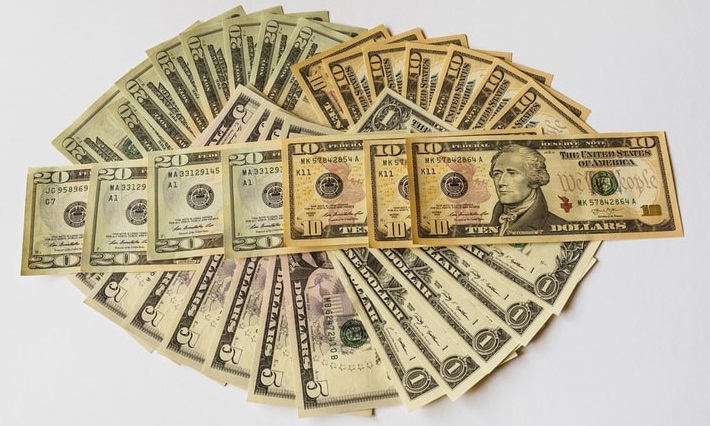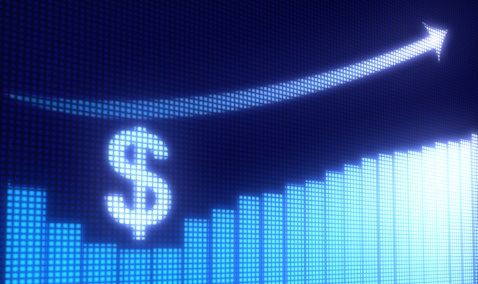It has been decent week for the US dollar. The buck is the joint best performing currency in the G10 alongside the New Zealand dollar and Japanese yen. The trade-weighted dollar index (DXY) started the week around 92.10 but had come within a whisker of setting fresh highs for the month of Tuesday in wake of a much stronger than expected US Consumer Price inflation report on Tuesday that saw both YoY rate of headline and core CPI beat expectations by 0.5%, leaving them at 5.4% and 4.5% respectively. The DXY then lost momentum and fell back below 92.50 on Wednesday amid what most markets participants interpreted as a dovish tone from Fed Chair Jerome Powell, who took part this week in his semi-annual testimony before two Congressional committees this week. To recap, his main message was 1) he still thinks the spike in inflation is going to be transitory and 2) he still thinks that the conditions for QE tapering (which the Fed loosely defines as “substantial progress” towards their goals) have not been met. Today (Friday), the dollar has since regained some ground and the DXY is trading currently in the 92.70s, only a few points below resistance in the form of the monthly highs just above 92.80. As things stand, the DXY is currently on course for gains of more than 0.5% on the week.
Those hoping that the dovish tone adopted by Fed Chair Powell this week despite hotter than expected US inflation data and the subsequent downwards pressure this exerted on US nominal but especially real yields (the 10-year TIPS yield fell back under -1.0% this week to fresh multi-month lows and to only slightly above recent record lows) would hurt the US dollar this week will have been disappointed. A dovish Fed and fall in US yields would typically have been expected hurt the USD. FX Strategists proposed a few reasons why this was not the case this week; 1) yields fell globally, not just in the US, meaning yield differentials haven’t changed too much against the dollar’s favour, 2) though the Fed might be falling behind some of the smaller, regional G10 and EM central banks with regards to its monetary policy tightening cycle, it is still well ahead of the likes of the ECB, BoJ and SNB, 3) whilst we are talking central banks, the PBoC has recently taken action to ease policy amid fears for Chinese growth, eroding the Chinese rate yield advantage over the US and, finally, 4) these fears about Chinese growth (and how this could hurt global growth), coupled with fears about the accelerating spread of the delta Covid-19 variant across Asia and G7 countries could be spurring something of a safe haven demand for the US dollar (that could explain why the safe-haven yen also had a strong week).
Moreover, dollar technicals continue to look bullish and this could have added to the reasons to be long (or at least not short) the dollar; every time that the DXY has fallen back towards its 21DMA (which has risen from under 92.00 at the start of the week to just above 92.20 this Friday), there has been significant buying interest. Meanwhile, the DXY also appears to be in the late stages of an ascending triangle formation, with the price action having been supported by an uptrend linking the 25th of June and 12th, 13th and 15th July lows but constrained by resistance in the 92.80s (where the monthly highs have formed). The formation of ascending triangles such as these often precede bullish breakouts. If the DXY does break out to the upside in the coming week, then we are likely going to see it break to the north of the 93.00 level and perhaps even on towards a test of the Q1 high just below 93.50. Another reason to be bullish from a technical perspective over the coming weeks is that we are likely to soon see a so-called “golden cross”, where the 50DMA crosses above the 200DMA. This is often picked up as a bullish signal by technical and systematic traders alike.
So what next for the dollar?
As noted above, it seems likely that there is some scope for technical related upside if the DXY breaks to the north of its current ascending triangle. Meanwhile, we have an important rate decision from the ECB next week, which is likely to emphasise how far behind the Fed they bank is with regards to its timeline towards monetary policy tightening. This could act as a bullish catalyst for the dollar. Otherwise, there are no key US data releases or any further commentary from Federal Reserve officials (the Fed is about to enter its blackout period ahead of the next FOMC meeting). While this means there will be no domestic catalysts for the dollar, it might also mean a lack of distraction from USD positive global themes like the dovish ECB. Covid-19 delta variant spread, and Chinese growth concerns are likely also to remain important themes next week, with both also fulfilling the definition of USD positive global themes. The above suggests the risk of a breakout for the DXY to fresh monthly highs and potentially above 93.00.
Beware though that as long as US real yields continue to fall, this will act as a drag on the buck. Meanwhile, traders also note that the scope for the dollar to gain further ground as a result of position adjustment may have run its course. Over the last few weeks, market participants unwound what had been quite a sizeable, short position (according to CFTC data) and positioning has recently moved to modestly long. There is room for a further build-up of long positioning, but the risk of a “short-squeeze” seems to have now abated.




